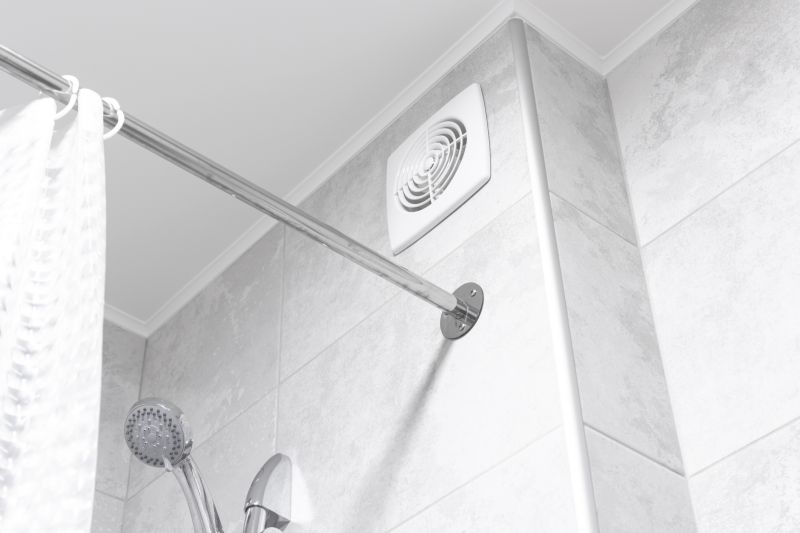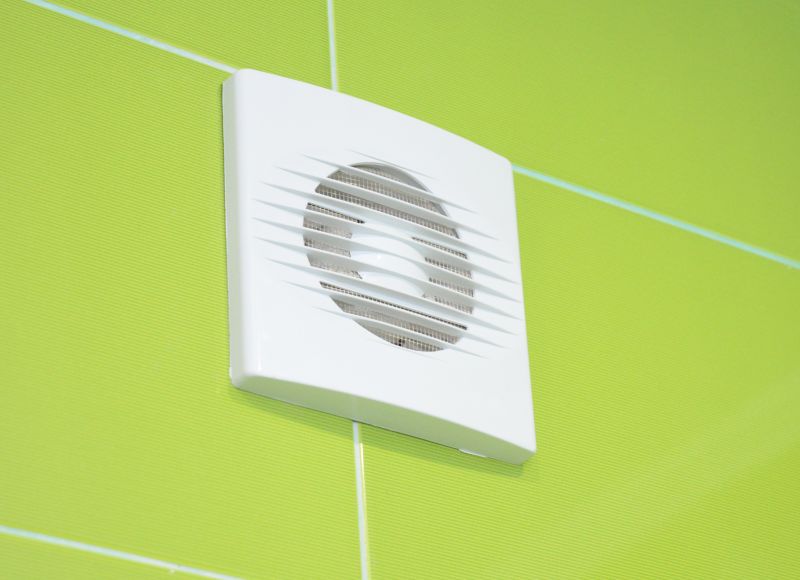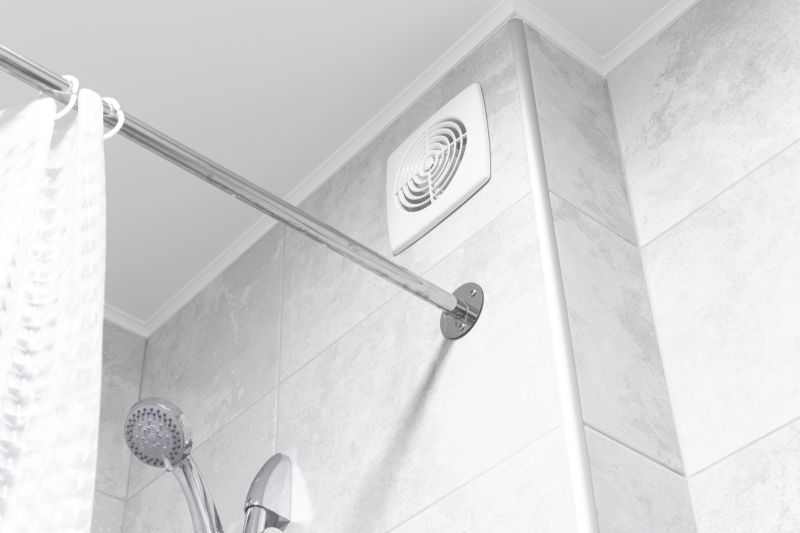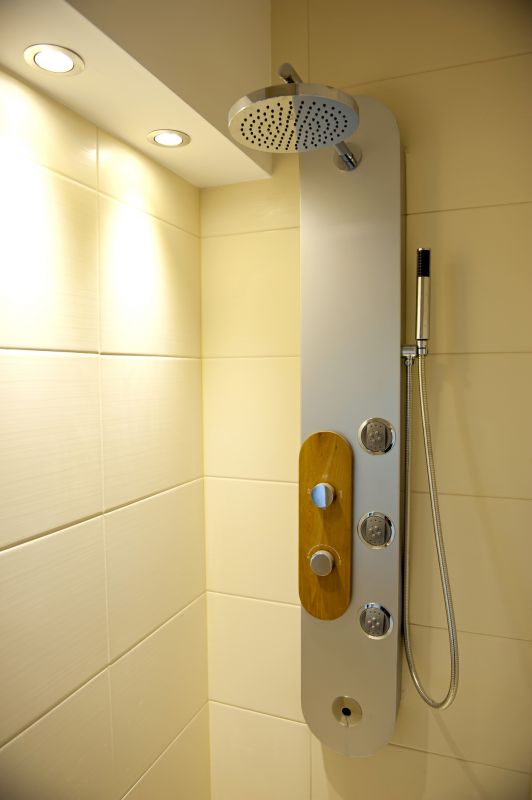Shower Ventilation Guide
Welcome to Aberdeen Showers
Shower Ventilation Guide

About Shower Ventilation Guide
Proper shower ventilation is essential for maintaining a healthy and comfortable bathroom environment. Without adequate ventilation, moisture can accumulate, leading to mold growth, peeling paint, and even structural damage. Understanding the various aspects of shower ventilation can help homeowners make informed decisions to enhance their bathroom's functionality and longevity.
One of the first considerations in shower ventilation is the type of ventilation system that suits your bathroom layout. Most homes use either an exhaust fan or a window to ventilate moisture. Exhaust fans are particularly effective in bathrooms without windows, as they actively remove humid air and help maintain air quality. It's important to select a fan with the appropriate capacity for your bathroom size to ensure optimal performance.
When selecting an exhaust fan, consider the fan's noise level and energy efficiency. Quieter fans are generally preferred for a more peaceful bathroom experience. Look for models with energy-efficient features to reduce electricity consumption. Additionally, some fans come with built-in humidity sensors, which automatically activate the fan when moisture levels rise, providing convenience and improved air quality.
For bathrooms with windows, natural ventilation can be an effective option. Opening a window after a shower allows fresh air to circulate, reducing humidity levels. However, this method relies on outdoor weather conditions and may not be suitable in all climates or during colder months. In such cases, a combination of natural and mechanical ventilation might be necessary.
Placement of the ventilation system is another crucial factor. The exhaust fan should ideally be located near the shower or tub, where moisture levels are highest. This positioning ensures that the fan captures and removes humid air efficiently. If a window is used, it should be positioned to allow maximum airflow across the bathroom.
Beyond selecting and installing the right ventilation system, regular maintenance is key to its effectiveness. Exhaust fans should be cleaned periodically to prevent dust buildup, which can impede airflow and reduce efficiency. Similarly, windows should be inspected for any signs of damage or obstruction that could hinder proper ventilation.
- Choose the right ventilation system for your bathroom size.
- Consider noise level and energy efficiency when selecting an exhaust fan.
- Ensure proper placement of the ventilation system for optimal performance.
- Regularly maintain and clean ventilation components to ensure efficiency.
In addition to preventing structural issues, effective shower ventilation contributes to a healthier indoor environment. By minimizing moisture, you reduce the risk of mold and mildew, which can cause respiratory problems and allergies. A well-ventilated bathroom also helps preserve the condition of fixtures and finishes, extending their lifespan and maintaining the room's aesthetic appeal.
Ultimately, understanding and implementing proper shower ventilation is an investment in the health and durability of your home. By considering the various options and factors involved, homeowners can create a bathroom environment that is both comfortable and resilient against moisture-related issues.
Proper Ventilation Techniques for Small Bathrooms
Maximizing Airflow in Limited Spaces
Small bathrooms present unique challenges when it comes to ventilation. Without proper airflow, these spaces can quickly become breeding grounds for mold and mildew, leading to unpleasant odors and potentially damaging the bathroom's interior. Ensuring adequate ventilation is essential to maintaining a healthy and comfortable environment.
One of the most effective ways to improve ventilation in a small bathroom is to install an exhaust fan. These fans are designed to pull moist air out of the bathroom, reducing humidity levels and preventing the growth of mold. It's important to choose a fan that is appropriately sized for the space to ensure it can effectively circulate the air. Regular cleaning and maintenance of the fan are also crucial to keep it functioning efficiently.
In addition to mechanical ventilation, utilizing natural airflow can be beneficial. If the bathroom has a window, opening it during and after showers can help dissipate moisture. Even a small window can make a significant difference in improving air circulation. For bathrooms without windows, considering a door vent or a transom window above the door can facilitate airflow between the bathroom and adjacent rooms.
Another consideration is the placement of vents and fans. Ideally, the exhaust fan should be installed near the shower or tub, where moisture levels are highest. This strategic positioning ensures that the fan captures steam and moisture before they spread throughout the room. Additionally, ensuring that the bathroom door has a small gap at the bottom can help fresh air to enter, aiding in the ventilation process.
Using moisture-resistant materials in bathroom construction can also help manage humidity levels. Materials such as tiles, waterproof paint, and mold-resistant drywall can withstand damp conditions better than standard materials. These choices can complement the ventilation system, providing an extra layer of protection against moisture buildup.
- Install an appropriately sized exhaust fan.
- Utilize windows or door vents for natural airflow.
- Position vents near moisture sources like showers.
- Choose moisture-resistant materials for bathroom surfaces.
- Ensure regular maintenance and cleaning of fans and vents.
Finally, regular maintenance is key to ensuring that ventilation systems remain effective. This includes cleaning exhaust fans and vents to prevent dust and debris accumulation, which can hinder airflow. By taking these steps, homeowners can create a well-ventilated bathroom that remains fresh and free of moisture-related issues.

Choosing the Right Exhaust Fan for Your Shower
Factors to Consider for Optimal Ventilation
Ensuring proper ventilation in your shower is crucial to maintaining a healthy and comfortable bathroom environment. An exhaust fan plays a vital role in removing excess moisture, preventing mold growth, and eliminating odors. However, selecting the right exhaust fan can be a daunting task, given the variety of options available. This article explores the key factors to consider when choosing an exhaust fan for your shower.
One of the primary considerations is the size of your bathroom. The capacity of an exhaust fan is measured in cubic feet per minute (CFM), which indicates how much air the fan can move in a minute. To determine the appropriate CFM for your space, calculate the volume of your bathroom by multiplying its length, width, and height. A general rule of thumb is that a bathroom requires at least 1 CFM per square foot, with a minimum of 50 CFM for bathrooms under 100 square feet.
Another important factor is the noise level of the exhaust fan. Measured in sones, this indicates how loud the fan will be during operation. If you prefer a quieter experience, look for fans with lower sone ratings. Many modern exhaust fans are designed to operate quietly without sacrificing performance, ensuring a peaceful environment while still effectively ventilating your shower space.
Energy efficiency is also an important consideration. Choosing a fan with an energy-efficient motor can help reduce electricity consumption and lower your utility bills. Look for fans with the ENERGY STAR label, which signifies that the product meets strict energy efficiency guidelines set by the U.S. Environmental Protection Agency.
Additional features can enhance the functionality and convenience of your exhaust fan. Some models come with built-in lighting, which can be particularly useful in bathrooms with limited natural light. Others may include humidity sensors that automatically activate the fan when moisture levels rise, ensuring optimal ventilation without manual intervention.
- Determine the appropriate CFM for your bathroom size.
- Consider the noise level and choose a fan with a low sone rating.
- Look for energy-efficient models with the ENERGY STAR label.
- Explore additional features such as built-in lighting or humidity sensors.
Finally, consider the design and aesthetics of the exhaust fan. While functionality is paramount, the fan should also complement your bathroom's décor. Many manufacturers offer a range of styles and finishes, allowing you to select a fan that blends seamlessly with your existing fixtures and fittings.
In conclusion, choosing the right exhaust fan for your shower involves a careful assessment of several factors, including size, noise level, energy efficiency, and additional features. By taking the time to evaluate these aspects, you can ensure that your bathroom remains a comfortable and healthy space for years to come.






